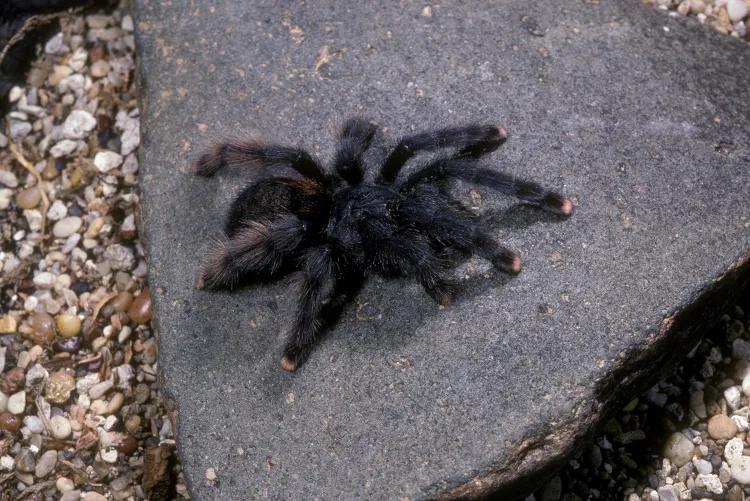Understanding the Pink Toe Tarantula (Avicularia Avicularia)
The Pink Toe Tarantula, scientifically known as Avicularia avicularia, is a captivating and popular pet spider. Its striking appearance, with its namesake pink toe pads and overall arboreal lifestyle, makes it a fascinating creature to observe and care for. Originating from the rainforests of South America and the Caribbean, this species has adapted to life in the trees, exhibiting unique behaviors and needs compared to terrestrial tarantulas. Understanding the Pink Toe Tarantula’s natural history is the first step in providing it with the best possible care, ensuring its health, and allowing you to fully appreciate its beauty and intriguing nature. It is important to remember these are not handle-friendly pets and should be treated with respect. These beautiful creatures are very delicate.
Origin and Habitat
Pink Toe Tarantulas are native to the tropical rainforests of South America, including countries like Brazil, Guyana, and Suriname, as well as some Caribbean islands. In their natural habitat, they are arboreal, meaning they spend most of their lives in trees. They create silken nests in the branches and crevices of trees, providing them with shelter from predators and a vantage point for hunting. The warm, humid climate of their natural environment is crucial for their survival, as it influences their behaviour, molting cycle, and overall well-being. Replicating these environmental conditions is key to successfully keeping a Pink Toe Tarantula in captivity. The right environment is vital to a healthy pet spider.
Appearance and Characteristics
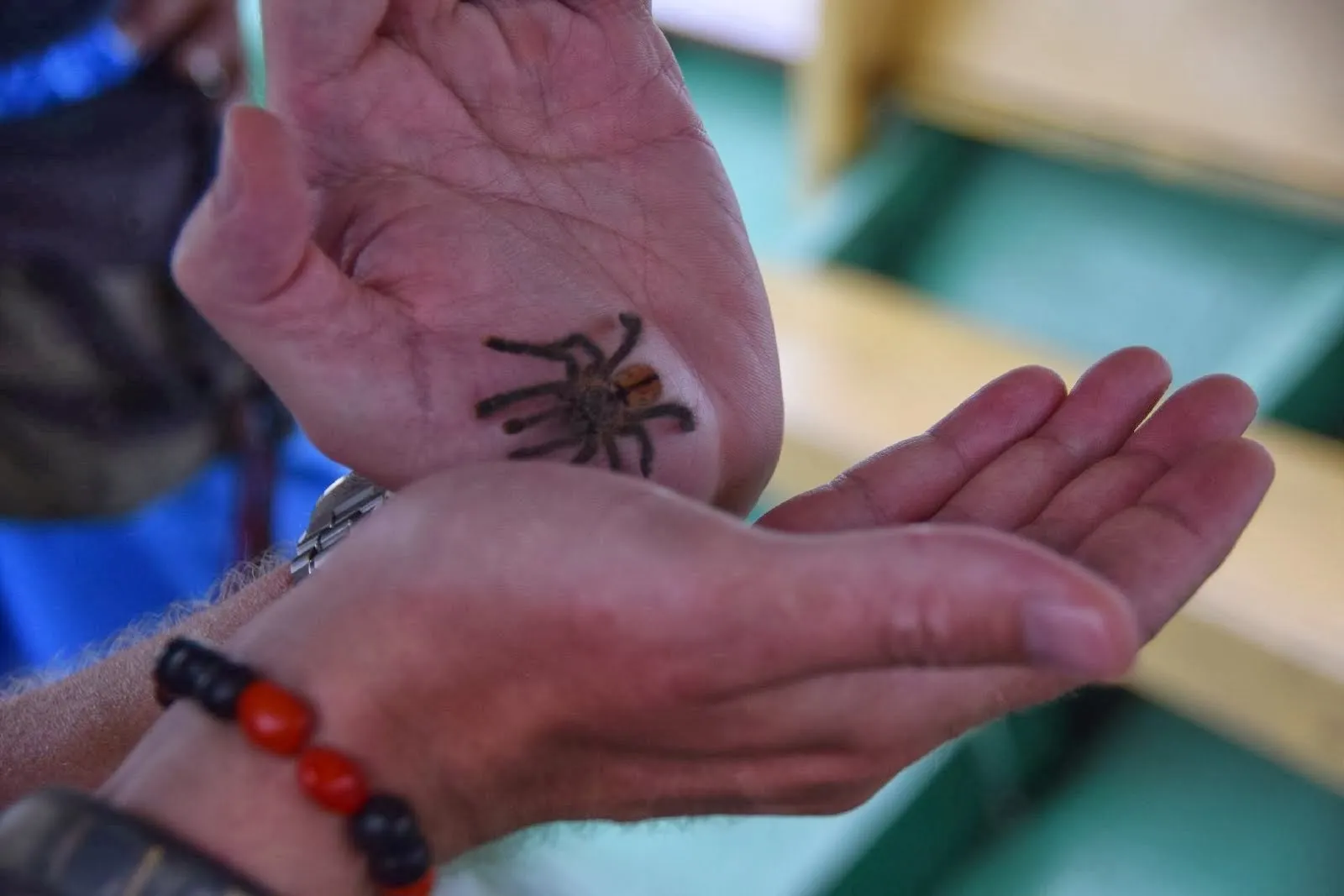
The Pink Toe Tarantula gets its name from the distinctive pink coloration on the tips of its feet. This feature, combined with its dark body and iridescent hairs, makes it a visually stunning species. Adult Pink Toe Tarantulas typically reach a leg span of 4 to 6 inches. They have a relatively slender build compared to terrestrial tarantulas. One of the most interesting characteristics of the Pink Toe Tarantula is its arboreal lifestyle, which is reflected in its ability to climb and its preference for creating silken nests in elevated locations. They are also known for their docile temperament compared to some other tarantula species, but they can still exhibit defensive behaviors if they feel threatened.
Creating the Perfect Pink Toe Tarantula Enclosure
Setting up the right habitat is crucial for the health and well-being of your Pink Toe Tarantula. Since they are arboreal, the enclosure should be taller than it is wide, allowing them to climb and create their nests. Providing the correct environment not only enhances their quality of life but also facilitates their natural behaviors. A well-designed enclosure will provide your tarantula with everything it needs to thrive, from adequate space and hiding places to the perfect humidity and temperature. Remember to research and understand the specific needs of this species before setting up their home.
Choosing the Right Tank Size
For an adult Pink Toe Tarantula, a terrarium that is at least 12x12x18 inches or even larger is recommended. The height is more important than the width, as they are arboreal. A larger enclosure will provide ample space for climbing, web-building, and overall movement. Ensure the enclosure has a secure lid to prevent escapes. The lid should also allow for adequate ventilation. When selecting an enclosure, consider that the tarantula will grow over time. It is important to avoid enclosures that are too large for smaller tarantulas, as this can make it harder for them to find food and feel secure.
Substrate and Decorations
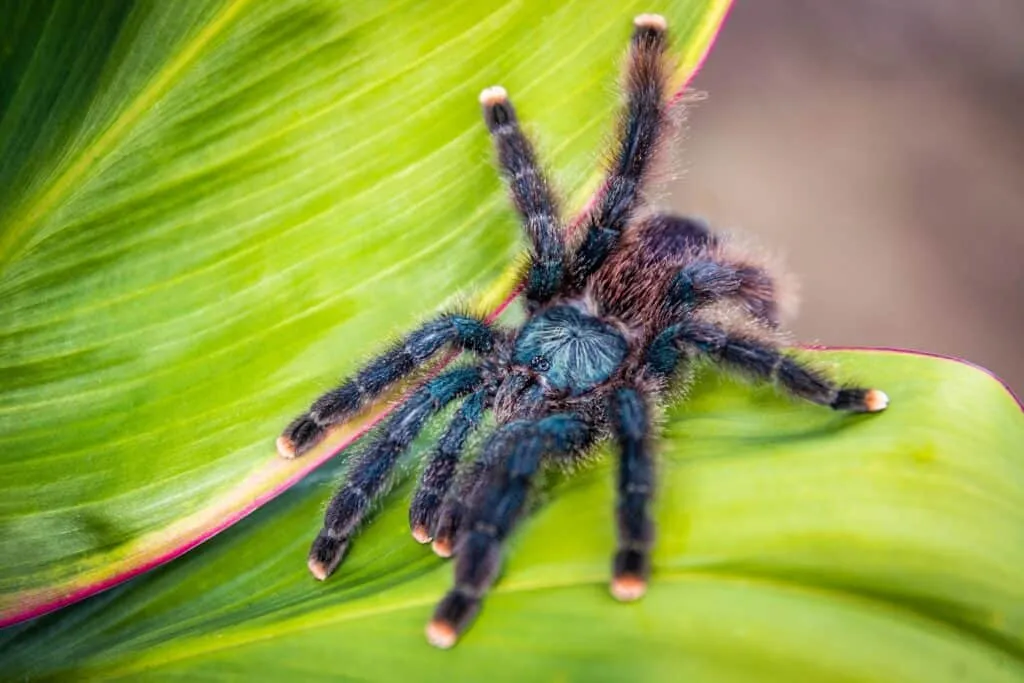
The substrate should retain humidity. A mixture of coconut fiber, peat moss, and sphagnum moss works well. This mixture helps maintain the humidity levels that Pink Toe Tarantulas need. Provide plenty of climbing opportunities using cork bark, branches, and artificial plants. These items will encourage your tarantula to build a web and make its home. Avoid sharp or abrasive decorations that could injure the tarantula. A shallow water dish should also be included for drinking, ensuring it is stable and accessible. Regular cleaning and maintenance of the enclosure are important for preventing the build-up of waste and mold. Cleaning and replacement of the substrate is also recommended.
Temperature and Humidity Control
Pink Toe Tarantulas thrive in a warm and humid environment. Maintain a temperature range of 75-85°F (24-29°C). This can be achieved using a low-wattage heat lamp or a heat mat placed on the side of the enclosure. Use a thermometer to monitor the temperature. Humidity levels should be kept between 70-80%. You can achieve this by misting the enclosure with water regularly, but avoid over-misting, which can lead to mold growth. Use a hygrometer to measure the humidity levels. Proper ventilation is essential for preventing mold and maintaining air quality. Ensure the enclosure has adequate airflow by providing small ventilation holes.
Feeding Your Pink Toe Tarantula
Providing a proper diet is critical for your Pink Toe Tarantula’s health, growth, and well-being. In their natural environment, Pink Toe Tarantulas are opportunistic hunters, feeding on a variety of insects and occasionally small vertebrates. In captivity, it is important to replicate their natural diet. This involves providing a varied diet of live insects and understanding their feeding habits. Overfeeding or underfeeding can lead to health problems, so understanding the appropriate feeding frequency and amount is essential. Feeding your Pink Toe Tarantula the right food is the best way to ensure a happy and healthy pet spider.
What to Feed
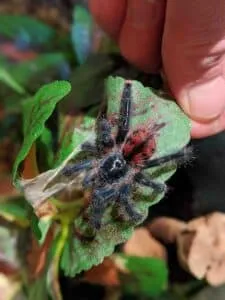
The main diet of a Pink Toe Tarantula should consist of live insects such as crickets, roaches (Dubia roaches are a good option), mealworms, and locusts. The size of the prey should be appropriate for the tarantula’s size, no larger than the tarantula’s body. Avoid feeding them insects that are too large, as this can be dangerous. Variety is important, so offer different types of insects to provide a balanced diet. You can also supplement their diet with the occasional pre-killed pinky mouse for adult tarantulas. Before feeding, it is important to gut-load the insects you provide to the tarantula. This involves feeding the insects nutritious food. Gut-loading the prey provides more nutrition to the tarantula.
Feeding Frequency and Amounts
Spiderlings should be fed 2-3 times a week. Adjust the frequency based on their appetite and growth. Subadults and adults can be fed 1-2 times a week. Remove any uneaten food within 24 hours to prevent mold and mites. Overfeeding can lead to obesity and other health problems, while underfeeding can stunt their growth. Adjust the amount of food based on the tarantula’s abdomen size, which should be plump but not overly distended. Monitor your tarantula’s eating habits and adjust the feeding schedule accordingly.
Water and Hydration
Provide a shallow water dish with fresh, clean water at all times. The water dish should be small enough to prevent the tarantula from drowning. Check the water level daily and refill as needed. Some keepers also mist the enclosure to provide additional moisture. Misting should be done carefully to avoid oversaturating the enclosure, which can lead to mold. Always use dechlorinated water to prevent harmful chemicals from affecting your tarantula.
Handling and Safety
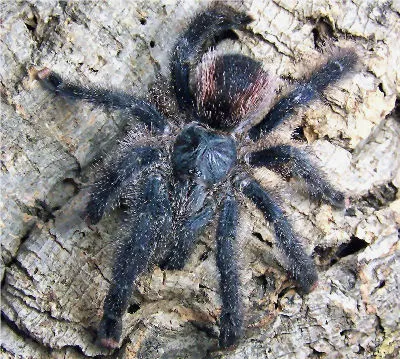
Pink Toe Tarantulas are generally considered to be docile, but they are still venomous and can bite if they feel threatened. While their venom is not usually life-threatening to humans, it can cause localized pain, itching, and swelling. Handling a Pink Toe Tarantula should be done with caution and only when necessary. It is important to prioritize the tarantula’s safety and your own when considering handling. Understanding the potential risks and knowing how to minimize them is key to safe interaction with your pet spider. It is also important to understand the tarantula’s behaviour and the environment it is in. Understanding your Pink Toe Tarantula’s behavior is key to avoiding bites or other issues.
When to Handle
Handling should be kept to a minimum. Avoid handling your Pink Toe Tarantula unless absolutely necessary, such as for enclosure cleaning or health checks. Always handle them in a controlled environment. It’s best to handle a tarantula when it is calm and not showing signs of stress. Do not handle your tarantula if it is about to molt, as they are more vulnerable during this process. Avoid handling them after feeding, as they may be more defensive. If you must handle the tarantula, do so when you have a calm and confident state.
Safe Handling Practices
If you must handle your Pink Toe Tarantula, do so gently and with respect. Handle the tarantula close to the ground or over a soft surface, like a bed, to minimize the risk of injury if it falls. Use a soft brush or a cup to gently coax the tarantula onto your hand. Avoid sudden movements or loud noises. Never grab or squeeze the tarantula, as this can startle it. Wash your hands thoroughly before and after handling. Always supervise children when they are near the tarantula.
Common Health Issues and How to Prevent Them
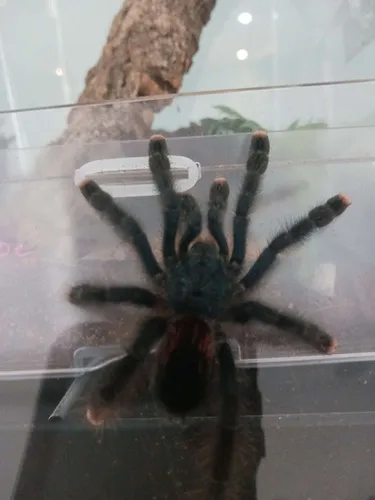
Pink Toe Tarantulas are generally hardy creatures, but they are susceptible to certain health issues. Many of these problems can be prevented with proper care. Regular observation and understanding of common issues can help you keep your tarantula healthy and happy. It is important to be proactive in ensuring a healthy environment for your pet. Being aware of potential issues and how to address them is crucial for responsible tarantula ownership.
Moulting
Moulting is a natural process where tarantulas shed their exoskeleton to grow. Before moulting, your tarantula may stop eating and become lethargic. It might also spend more time on the ground. Do not disturb your tarantula during moulting. Provide adequate humidity and avoid handling. After moulting, the tarantula’s new exoskeleton will be soft. Do not feed your tarantula until its fangs have hardened, which can take several days. Ensure that the tarantula has adequate water during the process. The process can be stressful, so the right conditions are important.
Parasites and Diseases
Mites can be a problem in tarantula enclosures. They can be introduced through contaminated substrate or feeders. Prevention is key, by quarantining new additions to the habitat and monitoring the substrate. Treat infestations with mite treatments specifically designed for tarantulas. Fungal infections can occur if humidity levels are too high or if the enclosure is not properly ventilated. Proper ventilation, good hygiene, and correct humidity levels will help prevent these infections. If you see signs of a health issue, consult an experienced tarantula keeper or a veterinarian. Be vigilant in monitoring your tarantula’s behavior and appearance for any signs of illness.
Breeding Pink Toe Tarantulas
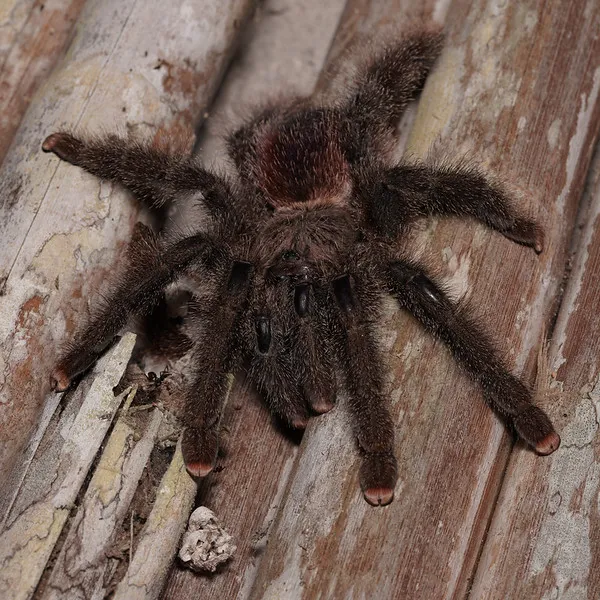
Breeding Pink Toe Tarantulas can be a rewarding experience for experienced keepers. It requires careful planning, dedicated space, and a thorough understanding of the species’ breeding habits. Breeding tarantulas is a complex process. Only experienced keepers should attempt to breed tarantulas. Successfully breeding Pink Toe Tarantulas can contribute to the conservation of the species. Ensure you have the knowledge and resources to handle the breeding process responsibly. It is important to understand the specific needs of breeding tarantulas.
Sexing Your Tarantula
Sexing a Pink Toe Tarantula is essential to determine if you have a male and female pair for breeding. The easiest way to sex a tarantula is by examining its molt. The female has a spermatheca, or egg sac, visible on the underside of her molt. Males have a pair of sperm webs located on the underside of their abdomen. You can also sex a tarantula by examining its pedipalps, the small appendages near its mouth. Adult males have modified pedipalps that look like boxing gloves. This is not always easy, and a close examination is often needed.
Breeding Process Overview
The first step is to introduce a well-fed male to the female’s enclosure. The male will drum on the female’s web. If the female is receptive, she will allow the male to mate. Monitor the pair during mating to ensure the female does not become aggressive. After mating, remove the male to prevent him from being eaten. The female will then lay an egg sac. The female will care for the egg sac. It is important to maintain appropriate temperature and humidity levels. Spiderlings will hatch in about 6-8 weeks, and should be separated from the female after hatching to prevent cannibalism. Breeding Pink Toe Tarantulas requires experience, careful preparation, and dedication.
Congratulations! You now have the information needed to properly care for your Pink Toe Tarantula. Proper care will allow it to live a long and fulfilling life. Enjoy your amazing pet spider!
